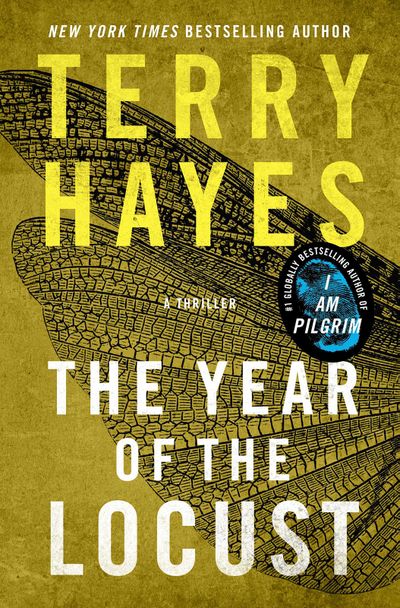Review: ‘Year of the Locust’ is a bonkers gem from the writer of blockbuster ‘I Am Pilgrim’

The title “The Year of the Locust” suggests a novel of biblical proportions. And it is.
Terry Hayes’ novel is an epic espionage thriller filled with wrath and retribution, faith and forgiveness, sacrifice, love and loss, all in the name of an almighty being. It’s a mind-bending story of one man’s evolution from spy to savior when the world descends into “utter darkness.”
We’re living “among the ruins of the Twin Towers” in an “Age of Panic,” says main character Ridley Kane (an ironic allusion to the Bible’s first killer). Kane is a “Denied Access Area” spy, one who is tasked with missions where angels fear to tread. As a young man, Kane was forced into a career with the CIA when he washed out of the Navy. He’s a “solo voyager,” who says his covert life is like “traveling through a sea of candles,” always trying to focus on the light. Kane may be the greatest spymaster of his generation because he trusts his prophetic visions and intuition as much as his training.
Hayes has constructed the plot as a quest narrative, taking Kane to the ends of the earth and back to save humanity from a person who has earned his place in the “pantheon of terrorism.” The story is told from Kane’s point of view after his quest has ended, presenting his journey to readers from assembled narratives because “paper can’t be hacked.”
In the novel, Hayes takes us on a deep dive into the workings of the CIA and the National Security Agency when Kane prepares for each stage of his journey. The settings are immersive and the historical details remarkable. From Afghanistan to Pakistan, from D.C. to Russia’s deep state and so many places in between, each landscape where Kane journeys is described in rich geographic detail with compelling backstories that contextualize each region’s cultures and values.
Understanding the nuance of places and their cultural contexts makes Kane’s quest more complicated, his choices more fraught. These elements, along with a huge cast of minor characters, including Kane’s wife, Rebecca (also a biblical name), give the novel a stunning, muscular style.
At close to 800 pages, this is a really big book with really big themes and chapter after chapter of blockbuster action (and graphic violence), often ending in foreshadowing that cranks up the suspense. The first three-fourths of “Year” definitely is the book many readers of Hayes’ first novel, “I Am Pilgrim” (another allusion to sacred texts), have waited 10 years to read. When the final part of the novel shifts into sci-fi territory, the sudden syncopation in the plot lines may throw some readers off. It’s bonkers and breathtaking.
I loved it.
It’s “not where you start that counts … or even where you finish,” notes Kane, contemplating his past and the world’s future. “It’s the length of the journey that matters.” And the future we get is “decided by what we do now – moment by moment, step by step, life by life.” Amen to that.